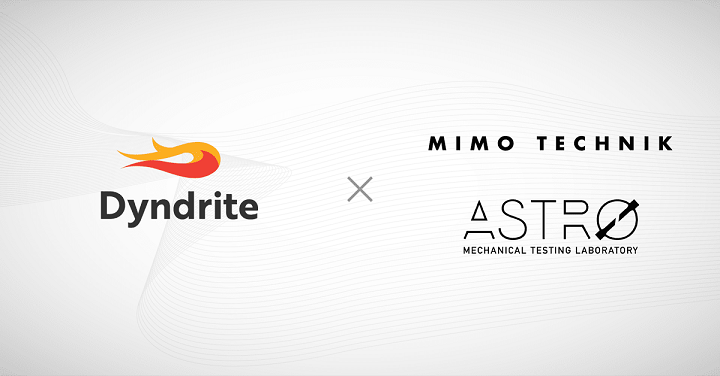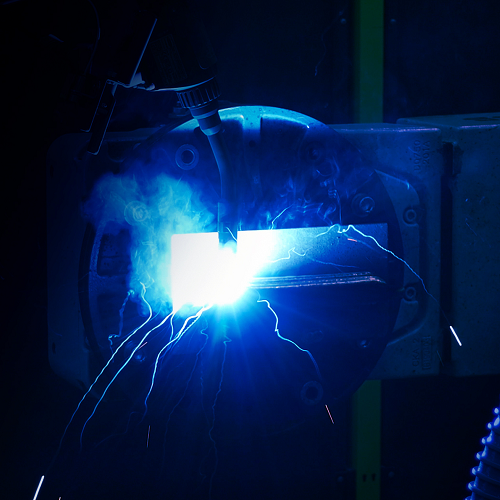Dyndrite is collaborating with MIMO Technik and ASTRO to speed up machine and material qualification for metal 3D printing, and AML3D expands its presence in the U.S. defense industry. 3DPRINTUK was featured in the FT Top 1000 companies. Finally, 3D printing was used to make a unique piece of jewelry, and an unexpected dessert.
Dyndrite Collaborates with MIMO Technik & ASTRO
First up, Dyndrite announced a new partnership with MIMO Technik, which develops manufacturing solutions in the AM space for aerospace, rocketry, defense and motorsport clients, and with ASTRO Mechanical Testing Laboratory, which executes mechanical and metallurgical testing for additive materials developed for spaceflight hardware, launch vehicles and satellites. Together, the three offer specialized solutions to support critical aerospace and defense programs, and qualified metal AM materials and machines for industry leaders like Northrop Grumman and Boeing through MASTRO, which is the internal proprietary parameter development process by ASTRO and MIMO Technik. Dyndrite’s two new partners will leverage its software tools to codify build recipes for MASTRO in order to achieve repeatable quality and traceability; these are necessary for a scalable qualification process.
“Parameter development and qualification is a tedious and time consuming process. Dyndrite’s tools allow users to rationally explore the parameter space of interest using their own algorithms while building upon provided tools,” explained Steve Walton, Head of Product at Dyndrite. “Our APIs are designed to support the user in these studies and algorithmically provide the build and toolpath pedigree to ensure data can be used in research, qualification, and production environments. The build and toolpath automation provided allows engineers to explore the solutions to new process problems, instead of spending energy on manual, error prone data entry.
AML3D Extends Presence in U.S. Defense Industry
Metal 3D printer OEM AML3D has a new contract for an alloy characterization and testing program that will support the U.S. Navy’s submarine industrial base. The approximately AUD$264,300 contract, signed with non-profit BlueForge Alliance, expands the company’s U.S. growth strategy, as well as its presence in the country’s defense industry, specifically its strategic partnership with the Navy. The alloy characterization and testing program will show that specific alloys, 3D printed on AML3D’s ARCEMY systems, meet the necessary manufacturing standards, and work on the program will begin immediately at AML3D’s Adelaide, South Australia facility.
“AML3D is excited to continue to develop its long-term, strategic partnership with the US Navy’s submarine industrial base,” said AML3D’s CEO Ryan Millar. “Our expansion in the US comes at a time of heightened interest in the potential of advanced manufacturing technologies to help meet increasing demand driven by the AUKUS alliance between the US, Australia and Britain. The alloy testing contract perfectly aligns with AML3D’s focus on the US defence, aviation and maritime sectors as drivers of growth. The alloy testing contract follows the sale, last month, of an ARCEMY® ‘X-Edition 6700’ system, via BFA, for use at the Oak Ridge National Laboratory in Tennessee, a key partner to the US Navy and other US global tier 1 clients. AML3D will continue to maximise the growth opportunities we see in the US by building out our North American sales team and capabilities, including establishing a value-added reseller network. This expansion into the US will result in AML3D being well positioned to access the opportunities that will be created as a result of the AUKUS Alliance, both in the US and Australia, where we have an established advanced manufacturing and research and development base in Adelaide, home to the Osborne Naval Shipyard, Australia’s largest naval shipbuilding hub.”
3DPRINTUK Listed as UK’s 3rd Fastest Growing Manufacturer
3D printing service bureau 3DPRINTUK is pleased to announce that it’s made the cut for the latest Financial Time (FT)/Statista ranking of Europe’s fastest-growing companies. The company, which specializes in low volume production with polymer powder bed fusion, was impressively ranked as the third fastest growing manufacturer in the United Kingdom on the list, which includes European companies that achieved the highest compound annual growth rate (CAGR) in revenue between 2018 and 2021. 3DPRINTUK is one of just 155 companies from the UK, and one of 83 London-based companies, that made the list.
“It is particularly satisfying to make it on to the FT 1000 list, because it testifies to the incredible dedication and hard work of the entire 3DPRINTUK team. This is especially true through 2020 and 2021, which were tricky to navigate with stringent COVID-19 restrictions. However, working in manufacturing in London during that time opened up some unexpected opportunities for our 3D printing service to fill some of the glaring gaps in supply chains in the UK,” said Nick Allen, CEO of 3DPRINTUK.
“The fact that 3DPRINTUK is the third fastest growing manufacturing company in the UK is something we are very proud of. It’s a team effort every day, and we have an amazing team with every single member contributing to this growth. Also, due the team’s consistent attention to detail and quality outcomes, we have a loyal and growing customer base which it is our pleasure to serve, as we continue to prove the place of 3D printing in a growing number of applications across industry.”
Startup 3D Prints Prototype Non-Violent Safety Bracelet
Female-founded startup LÆMON developed the first IoT-enabled safety bracelet, featuring an integrated alarm for non-violent self defense. As Tina Schlingmann, Regional Director EMEA at EOS, explained in a LinkedIn post, the latest BKA study in Germany found that 40% of female respondents are afraid to leave the house at night, and that while 92% of car thefts are reported, only 1% of sexual assaults are. LÆMON combines design and technology to create awareness that we all deserve to feel safe, with its visual statement against violence coming in the form of its stylish yet protective accessory.
The startup partnered with PROTIQ – A Phoenix Contact Company to make the prototype for its bracelet. The company is an industrial 3D printing expert, and worked with LÆMON to meet the complex requirements for the accessory, using copper to print the frame and technical plastics to print the case and wristband. The bracelet links to an app, and gives the wearer the choice of sounding a very loud alarm, or sending a silent message to your emergency contacts. With PROTIQ’s help, the startup was able to finish its first prototype very quickly and present it at the recent Berlin Fashion Week.
Columbia University Researchers 3D Printed a Cheesecake

Using 3D printing and lasers, Columbia Engineering’s Creative Machines Lab fabricated a seven-ingredient vegan cheesecake. The final iteration is shown at full scale.
While the concept of 3D printed food may seem strange, it’s definitely not new, and it’s getting better all the time. A team of engineers from Columbia University recently completed an experiment to develop practical uses for 3D printing in mechanically assembled food—by making a seven-ingredient vegan cheesecake using 3D printing and laser technology. Study coauthor Dr. Jonathan Blutinger and his colleagues have been working for years to develop more 3D printable foods with larger numbers of ingredients, and for this study, they combined graham cracker paste and other ingredients to create a customized slice of dessert in about 30 minutes. The cheesecake even comes in multiple flavors, and Dr. Blutinger said the technology can even “localize flavors” in the dishes. He hopes in the future to work on a nutritional study that will analyze how cooking with lasers could affect food on a molecular level, which could help increase people’s comfort level with the technology.
“There’s perhaps a stigma associated with this word (3D printing). Usually with printing you think of an industrial process. (But) it’s important to realize that this is no different than cooking normally except instead of chopping the ingredients up and everything like that, the machine is basically just assembling it in paste form,” explained Dr. Blutinger, a mechanical engineer and postdoctoral researcher at Columbia Engineering’s Creative Machines Lab.
Subscribe to Our Email Newsletter
Stay up-to-date on all the latest news from the 3D printing industry and receive information and offers from third party vendors.
You May Also Like
Stratasys Buys Arevo’s Carbon Fiber 3D Printing Assets
In its first major move since the year began, Stratasys Ltd. (Nasdaq: SSYS) has announced the acquisition of Arevo Inc.’s technology portfolio, marking a strategic expansion of its capabilities in...
Everything Must Go? Arevo’s 3D Printing Assets up for Auction
Arevo was among the first startups to develop a method for continuous carbon fiber 3D printing at large scales. With investments from Khosla Ventures and In-Q-Tel, among others, the Silicon...
Flexible Wireless Temperature Sensor Made with 3D Printing
Researchers from the University of Glasgow, University of Southampton, and Loughborough University have developed an innovative flexible temperature sensor utilizing microwaves and 3D printing technology. As detailed in an article...
3D Printing News Briefs, January 6, 2024: Digital Spares, Interbody Implants, Shoes, & More
In today’s 3D Printing News Briefs—the first of the new year!—we’ll start with metal 3D printing and move on to software and digital spares. Then it’s on to medical news...


































